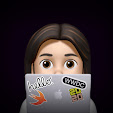Image via Apple You recently brought an iPhone XS to replace your 2-year-old iPhone 7. Then you started up your new iPhone and connected...
 |
| Image via Apple |
First off, the Quick Start feature derived from iOS 11 in late 2017. This feature makes the transition from an older iPhone to a new iPhone a smooth process. It involves two iPhones connected via Bluetooth transferring the old iPhone’s data to the new iPhone. Then the new iPhone scans a pairing animation similar to the one on the Apple Watch on the older iPhone. Your iPhone starts the transferring process after the Apple ID accounts are signed in for both of the iPhones.
Aside from the introductory paragraph, let’s get this to work.
Grab your new iPhone and your old iPhone, then switch Bluetooth on for both iPhones. Then a Quick Start prompt should pop up on your old iPhone, telling you if you want to use your Apple ID with your new iPhone. Tap Continue if the Apple ID shown is correct.
Next, your new iPhone will show a pairing animation on its screen. Get your old iPhone with its viewfinder open, and center the animation with the camera. If you’re having difficulty with this step, then tap on Authenticate Manually and enter the codes displayed on your devices. This step is similar to the beginning of the Apple Watch pairing process.
After you’re done authenticating and pairing both of your iPhones, enter the passcode of the old iPhone on your new iPhone. Then set up Touch ID or Face ID on the new iPhone. Once you set up the Touch ID/Face ID passcode on your iPhone, enter the Apple ID password on it. If you have other iOS devices or Macs, you have to enter their passwords/passcodes as well.
Now it’s time for the data of your old iPhone to carry over to your new iPhone. You get to decide if you want to use your most recent iCloud backup to transfer all of the data, or modifying the latest backup and restoring it afterward. Choose one of these choices, then select the type of data you’d like to transfer. You can choose to transfer your settings pertaining to Apple Pay cards, Siri, Location Services and privacy. If you wear an Apple Watch, you’ll also get a prompt to transfer your Apple Watch data and settings, including pairing your existing watch to your new iPhone. On the other hand, WiFi is required if you’re planning to modify your latest iCloud backup or if cellular data isn’t available.
Finally, the process is almost done! You just have a few more things to double check if your data from your old iPhone is transferred properly. Make sure that your email accounts are correct and set up, podcasts and music files, contacts, and calendar events aren’t missing. Check your settings to make sure all of them are the same as your last iPhone. In addition, you have to open every app to reenable notifications or turn them on in Settings > Notifications. If any in-app purchases are lost, then you have to restore your purchases and sign in with the same Apple ID you used with your previous iPhone.
Therefore, this process is quicker than restoring your iPhone from a previous iCloud backup and going through a longer setup process, right? Now you can start using and enjoying your new iPhone without the hassle!









COMMENTS